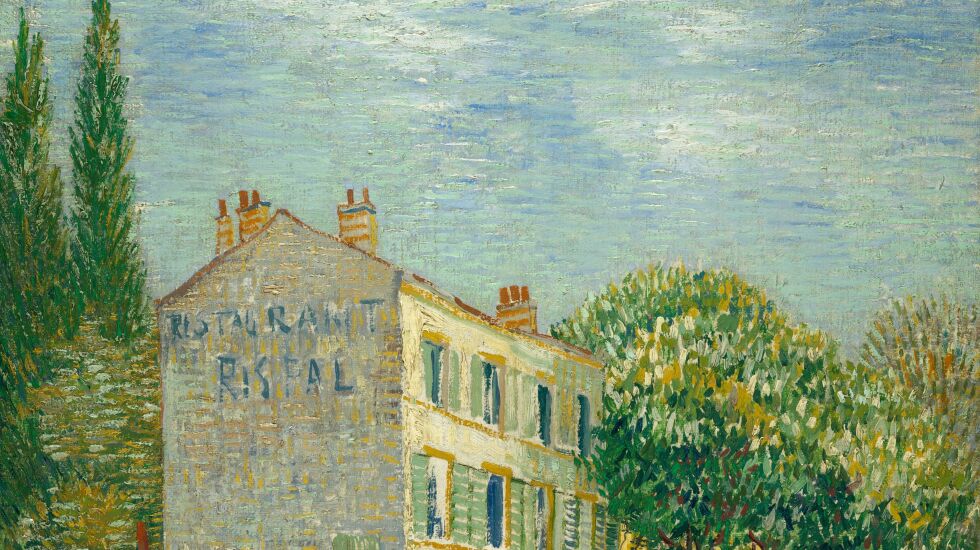
Few names stand taller in art history than Vincent van Gogh. Since he took his own life at age 37 in 1890, the emotionally troubled Dutch artist has been featured in hundreds of exhibitions across the world. Indeed, it seems fair to ask: Is there anything new that can possibly be said about him?
Jacquelyn N. Coutré, associate curator of painting and sculpture of Europe at the Art Institute of Chicago, and Bregje Gerritse, a researcher at the Van Gogh Museum in Amsterdam, believe the answer is a resounding “yes.”

The two have organized an exhibition that takes the first-ever in-depth look at artworks created by Van Gogh and four of his fellow Post-Impressionists, at various times from 1882 through 1889 in Asnières and other nearby locales along the Seine River just outside of Paris.
“Van Gogh and the Avant-Garde: The Modern Landscape” opens May 14 and runs through Sept. 4 at the Art Institute. The summer blockbuster contains 75 paintings and drawings from public and private collections around the world.
“The term, ‘avant-garde,’ is about moving forward, about being frontrunners,” said Gerritse, “so we really wanted to express that this is a show about artists pushing themselves, going outside the city walls and looking for a new modern painting style to follow in the footsteps of the Impressionists.”
Unlike Argenteuil and some of the more traditionally picturesque areas farther along the Seine depicted by the Impressionists, the Parisian suburbs around Asnières were undergoing a rapid transformation in the late 19th century and an array of industrial buildings were invading the countryside.
Though not a unified group, these five artists were similarly energized by the area’s sometimes ungainly mix of the new and old, natural and human-built, and they were inspired to undertake transformative experiments in what Coutré called “optical mixing.”
“We really wanted to focus on the artists who were doing radical, pioneering things, particularly in terms of technique, but also in terms of subject matter,” she said.
What started, for example, with Georges Seurat and Paul Signac applying contrasting strokes of unblended paint to their canvases (divisionism) turned into complementary dots of color in the more famous style of pointillism. Émile Bernard experimented with outlining areas of color with dark outlines (cloisonnism.)

Van Gogh, who is represented by 24 works, including “The Restaurant Rispal at Asnières” (1887), worked in and around Asnières from May through July 1887. “He made around 40 works there, which is quite substantial,” said Gerritse, “and it’s something that hasn’t really been thought about. There are people who have mentioned it very briefly, but this show really puts this campaign in its own light.”
During these daily trips outside Paris, he began exploring the swirling compositions and intense colors that reach their apotheosis in his better-known depictions of olive trees and wheatfields created later in the South of France.
“This really gives new insights into his development,” Coutré said. “I think part of what this show helps us to understand is how he went from his realist period, which is full of ochres and dark colors, to something radical like ‘Starry Night.’”
One of the biggest surprises of this show is its spotlight on Charles Angrand, a previously little-known painter from Normandy whose main career was teaching math. He made approximately 100 paintings, including six around Asnières in 1885-89.
“Many of his exhibitions up until this point,” Coutré said, “have been in smaller, more provincial museums, so we are really excited to bring him to the attention of the larger art world,”
Van Gogh discovered one of Angrand’s works in the window of a Parisian art supply shop, and wrote the artist, suggesting they trade paintings. Angrand also went on painting trips with the usually solitary Seurat, and the show includes side-by-side examples of the pair’s 1888 pointillist depictions of the same scene — the Seine River at the Island of La Grande Jatte.
Coutré also highlighted Angrand’s “The Seine at Dawn” (1889), which she described as “mind-blowing.” The hushed, semi-abstract scene depicts a lone fisherman on the Seine with outlines of industrial chimneys in the distance.

“Van Gogh and the Avant-Garde” was the brainchild of Maite van Dijk, then senior curator of paintings at the Van Gogh Museum. She left in 2021 to become director of another Dutch museum.
It was inspired in part by the Van Gogh Museum’s 2016 acquisition of Signac’s “The ‘Ponton de la Félicité’ at Asnières (Opus 143)” (1886). Van Gogh is believed to have seen the 13⅛-by-18⅜-inch painting, which depicts a floating dock for a tourist boat with a gas tank visible above the river bank.
Because of the scale of this show and the desire for a second venue, the Van Gogh Museum wanted a partner institution to serve as a co-organizer. So, it reached out to the Art Institute, in part because of its important Seurat holdings, including “A Sunday on La Grande Jatte — 1884.” The famed painting is not in the exhibition, because it does not move, but several related preparatory works are.
In all, eight works from the Art Institute are included, including Van Gogh’s “Self-Portrait” (1887), which serves as a kind of introduction to the show.
“Things just all started to add up, and we realized we should really collaborate,” Gerritse said. “And they immediately said yes, and we were thrilled.”







